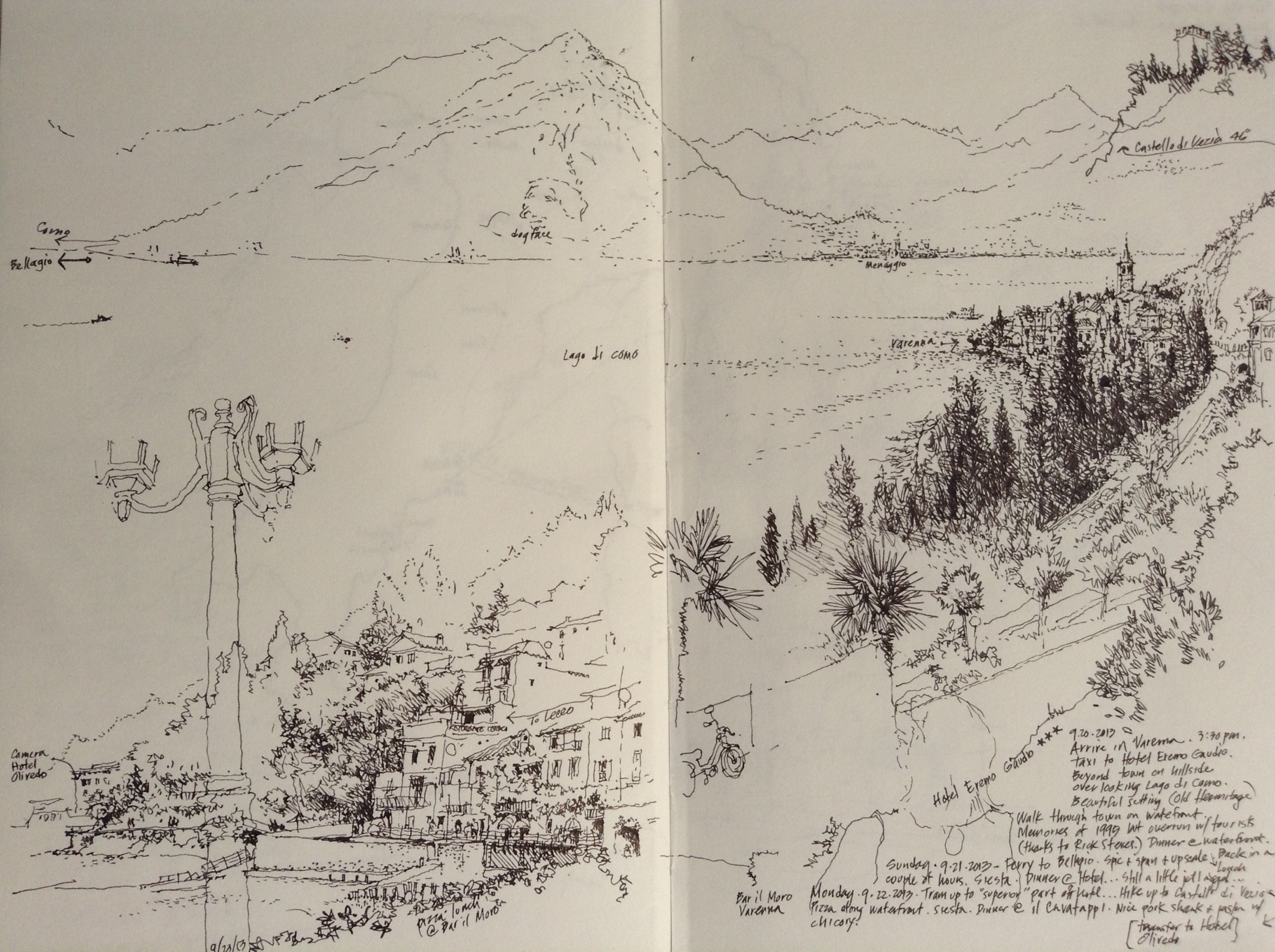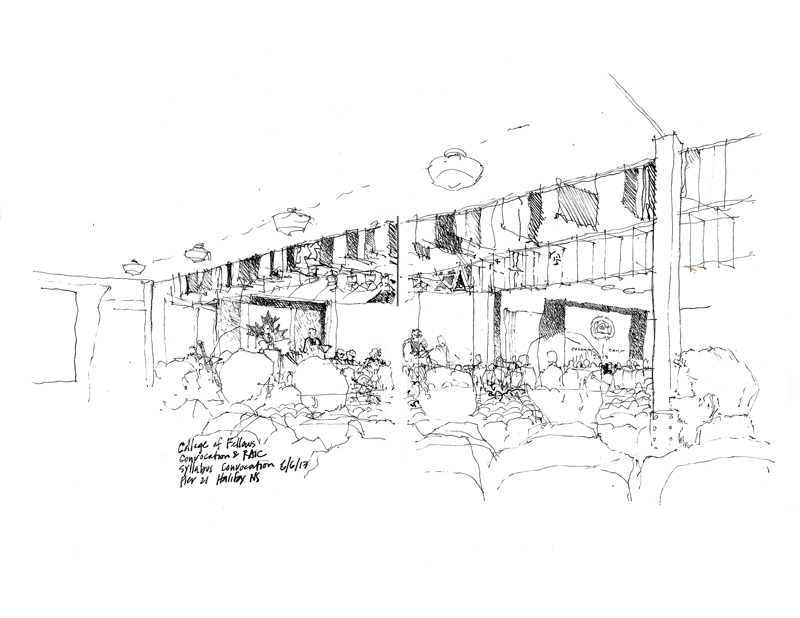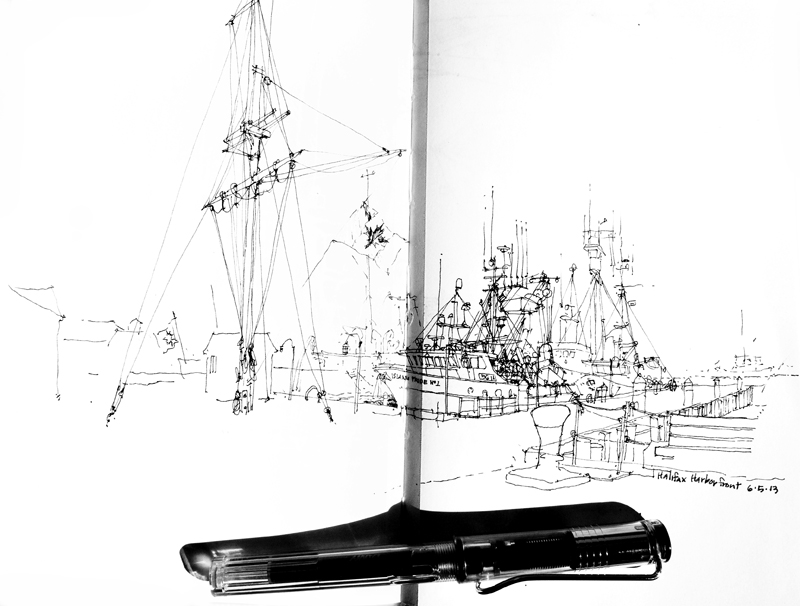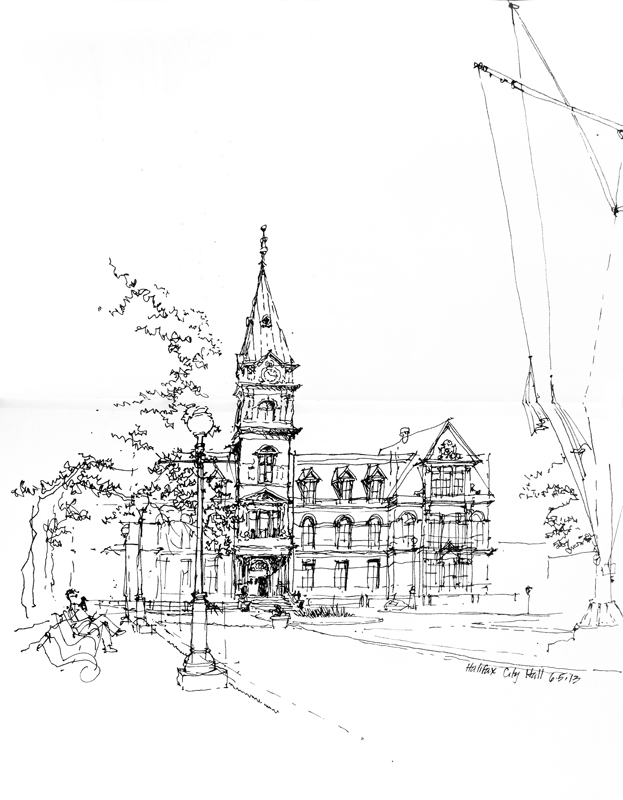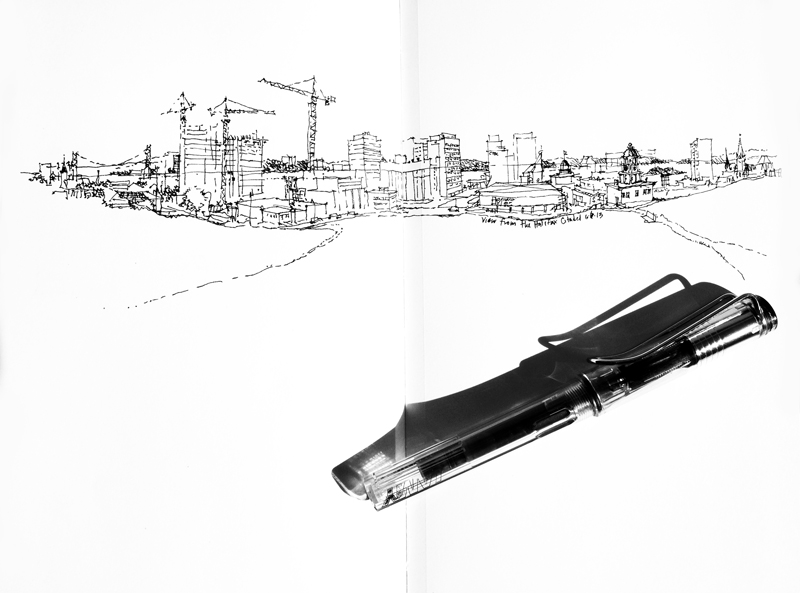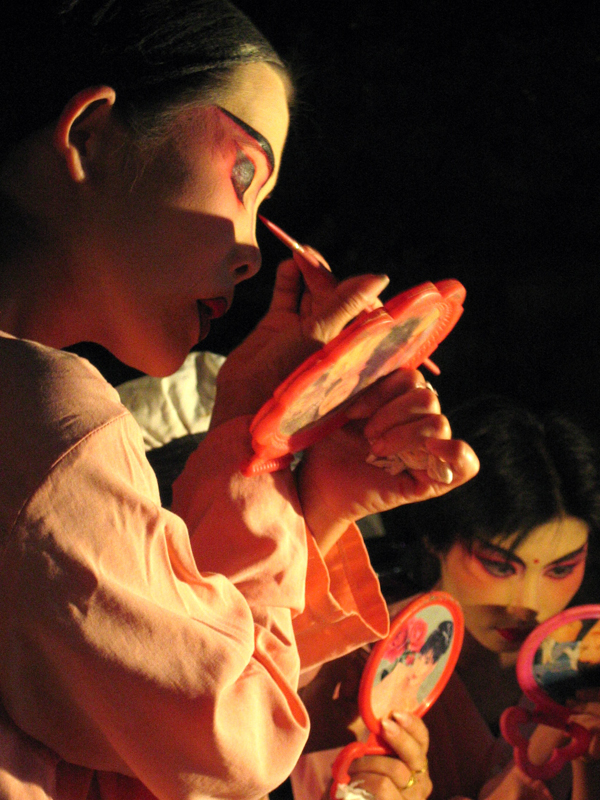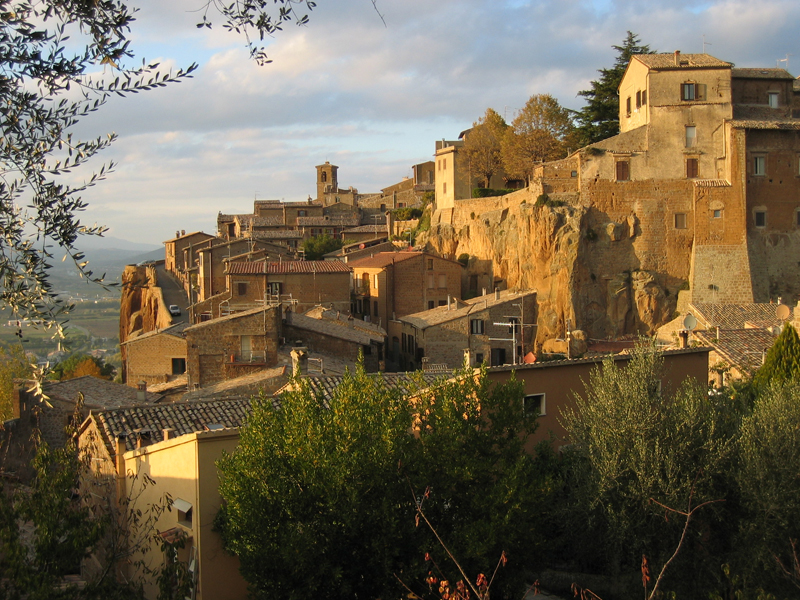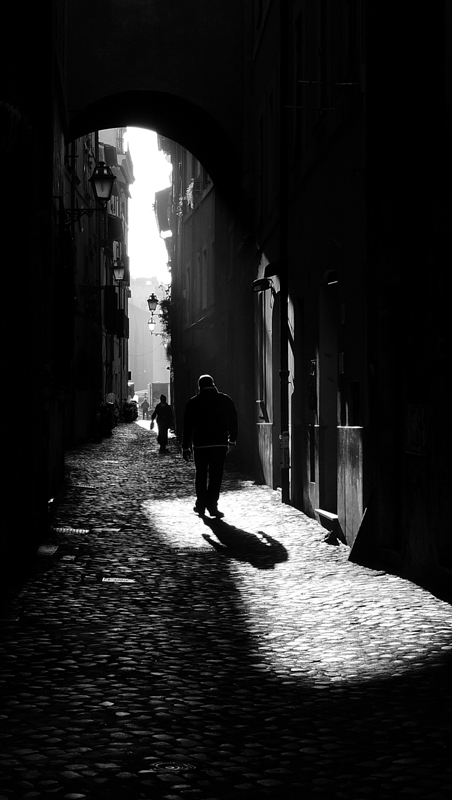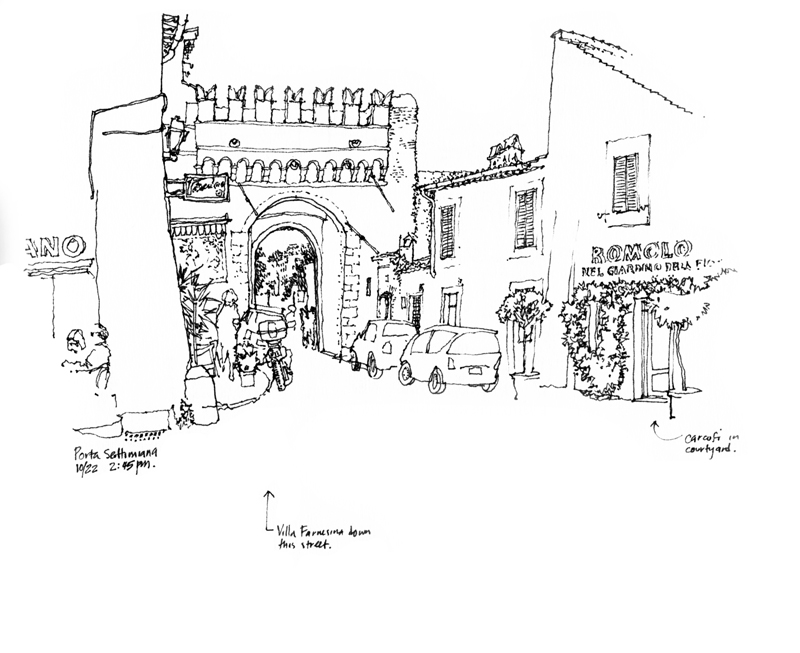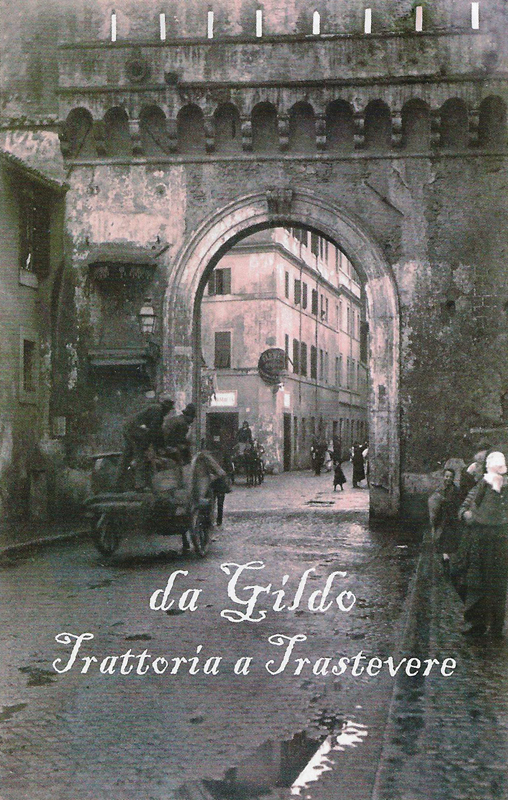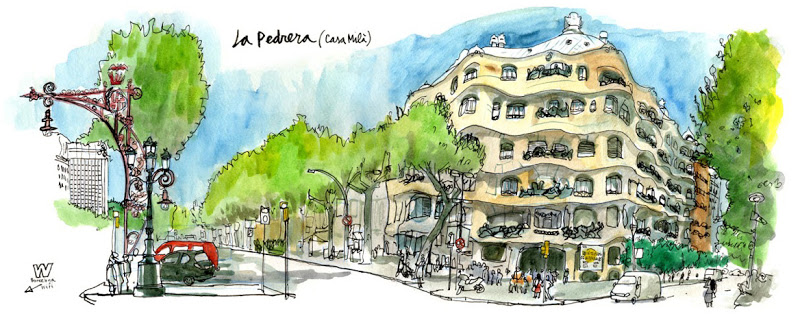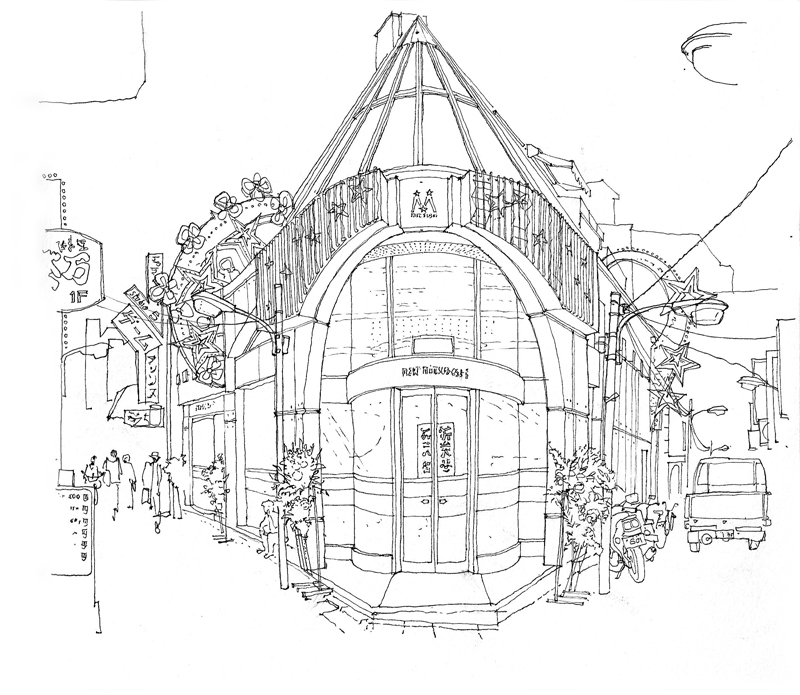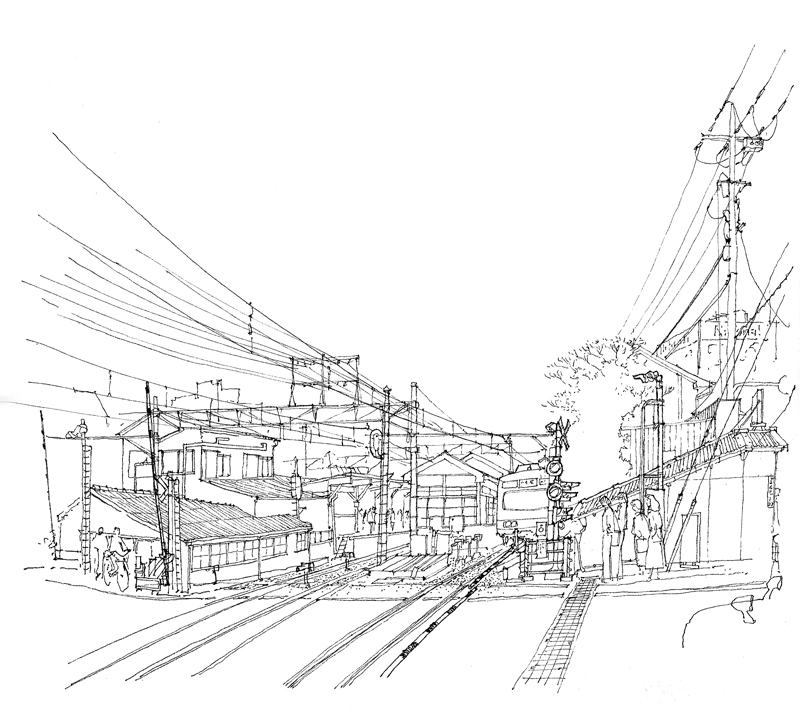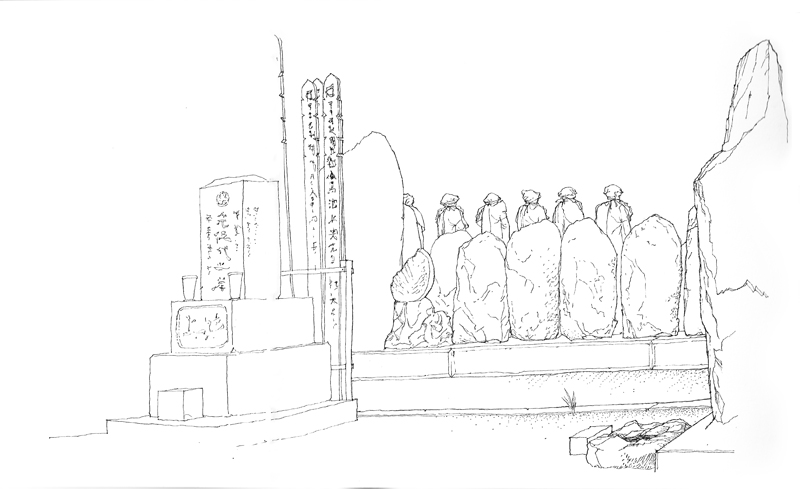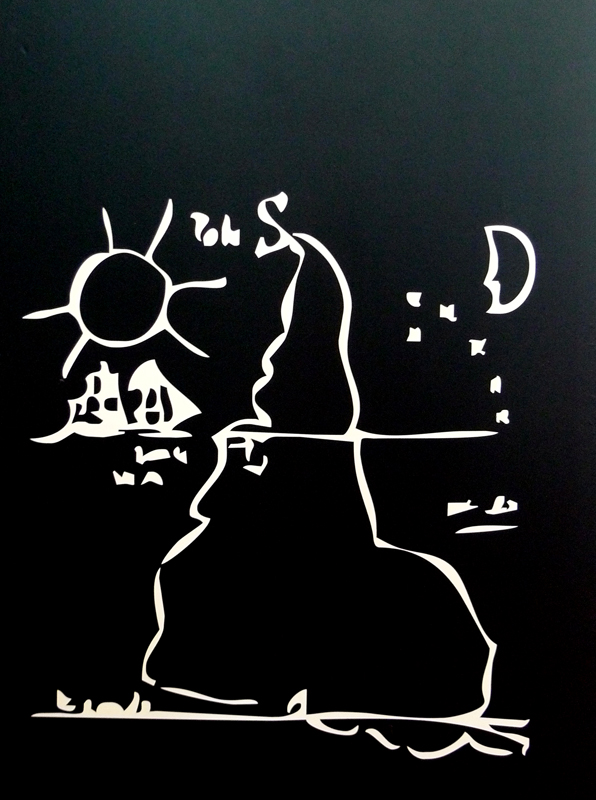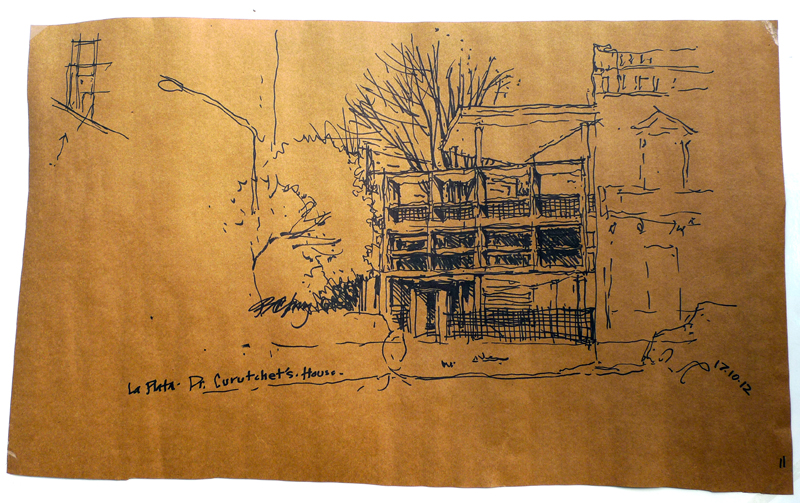After spending a day and a couple of nights in Rome to get acclimated to the time change, we took a train up to Milan and another to Varenna on the east shore of Lake Como. This is the view from the Hotel Eremo Gaudio, up the hillside and south of town. The other sketch is from a terrace cafe on Varenna’s waterfront. When we first visited Varenna in 1995, it was a much quieter place. It’s more popular now, especially on the weekends, but it remains a spectacular setting for a respite.
Category Archives: Travel
RAIC College of Fellows
Last Friday evening, the Royal Architectural Institute of Canada (RAIC), as part of their annual Festival of Architecture, held a convocation for its College of Fellows at the Canadian Museum of Immigration on Pier 21 in Halifax. Here is a sketch I did as I sat in the rear of the hall, watching as a new group of members were installed as RAIC Fellows.
The event reminded me that in this age when viral and often transitory moments dominate our consciousness, there still remains a place for tradition and stability in our lives, just as buildings still require a strong and stable foundation, even though hidden from view, upon which the newest forms and fads can be erected.
Halifax, Nova Scotia
On Tuesday, I flew from the west coast of North America to the extreme east coast to arrive in Halifax, Nova Scotia, where I’m attending the Festival of Architecture, the annual conference of the Royal Architectural Institute of Canada. Before my workshop sessions begin, I’m finding the time to walk around the waterfront district and do some sketching. Here are three views: one of the waterfront, another of the Halifax City Hall built in the late-19th century, and the last, a panoramic view from the Halifax Citadel.
A Few of My Favorite Photos
Because I’m still busy trying to finish a book revision and completing our move to Fremont, I’m turning away from drawing for this post and sharing a few of my photos. This idea came to me as I was reading through a discussion on a photography website that started with the question: What is your favorite photo? This would be difficult for me to answer but there are several that stand out in my mind for various reasons.
The first is of actors preparing for their Chinese opera performance in the city of Quanzhou, China. I was lucky to get this shot since it was taken at night without a flash.
The second is looking along the edge of Orvieto as it rises from the Umbrian countryside on a large butte of volcanic tuff. The colors remind of a Renaissance painting.
The third was taken in the early morning, looking down Via dei Cappellari as it leads toward the Campo de Fiori in Rome. I enjoy black-and-white photos, especially those that mimic old T-MAX 400 film.
While taking photographs is a completely different experience from drawing on location, they both serve similar ends—creating visual memories of family and friends, places and events. The difference may lie in that while a camera may capture moments in time, a drawing done on location extends and deepens our awareness of both time and place even as we immerse ourselves in the moment.
Porta Settimiana
Porta Settimiana is a gate in the Aurelian Wall on the west side of the Tiber. Marking the beginning of the Via della Lungara that leads from Trastevere to the Borgo, Porta Settimiana is a restoration of the original gate that was built in 275 AD over the Via Recta, undertaken in 1498 under the direction of Pope Alexander IV.
Looking the other way back through the Porta at the corner where Via della Scala meets Via Benedetta is l’Antica Trattoria Da Gildo, one of my favorite little restaurants in Rome. This is where I had my first taste of Cacio e Pepe in 2000, which has not yet been surpassed. I frequent Da Gildo whenever I teach in Rome and I’m looking forward to dining there again this fall.
Barcelona!
Urban Sketchers has just announced that the 4th International Urban Sketching Symposium will take place in Barcelona, July 11–13, 2013. A beautiful setting for what looks to be an exciting event, with lots of workshops, panels and lectures.
For more information and to sign up for updates, see <www.urbansketchers.org>.
A Story to be Told
I have often dreamed of writing and illustrating a children’s book, or at a larger scale maybe even a graphic novel. Always stopping me, however, was the lack of a genuine story to be told, a narrative with emotional and intellectual content. Technique, no matter how well developed, could only carry me so far.
That is why drawing on location suits me. Instead of having to create imaginary settings and characters, I can rely on the visual stimuli derived from direct observation. Real settings that can be experienced in a straightforward manner provide the raw material for my sketches, which I can then interpret in a purely descriptive manner or alter to suit my temperament.
This view of the train leaving O-Okayama for Tokyo is from real life, but even when drawing from a photograph, which lacks the immediacy of drawing on location, the visual information provides a starting point for thinking about and responding in a graphic manner. It’s a matter of fiction versus reality and I imagine even a lot of fiction is based on personal experiences, perceptions, and insights.
Behind each of these sketches lies a possible story. Maybe some day, if I am fortunate enough, I will be able to knit these into a more compelling one.
South America
We happened on this graphic of South America during our recent visit to Universidad Nacional de Córdoba in Argentina. It figuratively turned our heads upside down. We had been so accustomed to maps of the world having north oriented up and south down. This graphic shows that there are other ways of seeing our world.
This idea of (dis)orientation manifested itself in another way on our first day in Córdoba, as we walked around the historic center with map in hand. I am usually pretty good at reading maps and orienting myself in new environments but something was amiss. It took a while but I finally realized this was because I had assumed that the sun was in the southern sky. But here in Córdoba, the sun was actually illuminating the northern sides of buildings and so what I had thought was south was actually north on the street map. And even knowing this, it remained difficult to overcome a lifetime of assumptions.
The Argentina Experience III
In each city we visited in Argentina I was asked to do a drawing demonstration. Public demonstrations always make me a little nervous but the warm reception to these made it worthwhile. The first demonstration was at Alta Gracia, where I explained my approach to selecting a viewpoint, composing the view, and beginning the drawing.
Le Corbusier’s Casa Curutchet in La Plata is an truly amazing work of architecture. Here is the demo I did of the exterior after we had toured and sketched the rich, light-filled interior spaces. It was exhilirating to see how well Le Corbusier was able to translate his Five Points of Architecture to a new continent and culture.
The Argentina Experience II
I didn’t have a lot of free time to sketch on my own in Argentina, but here are two views of Córdoba from our first day there. The first is of the Plaza de la Independencia as seen from our hotel room.
The second drawing is of the Plaza San Martin, center of the historic district and featuring a statue of José de San Martín, the Argentine general who lead the successful struggle for independence. In the background, you can see the 16th century Cathedral.

